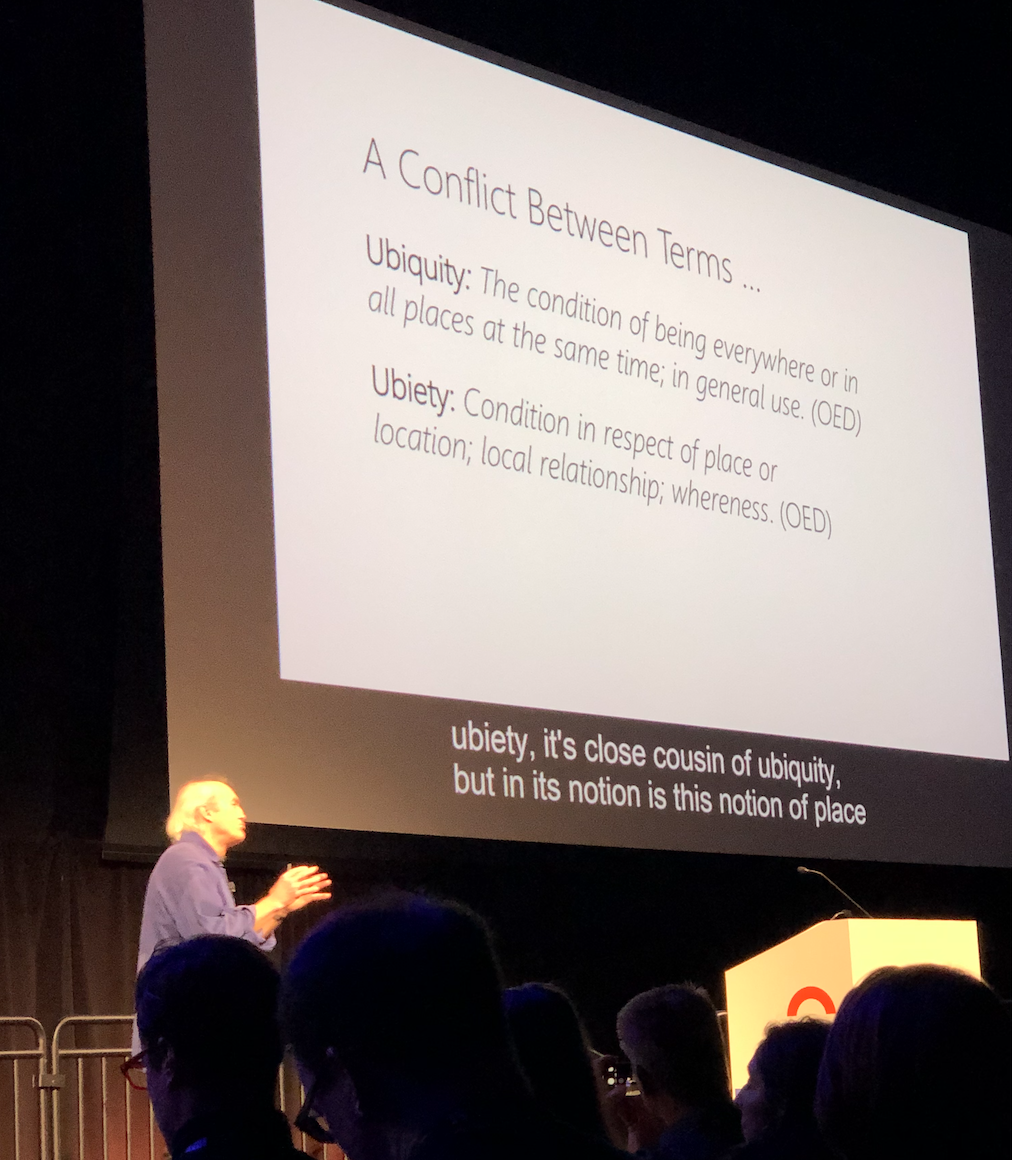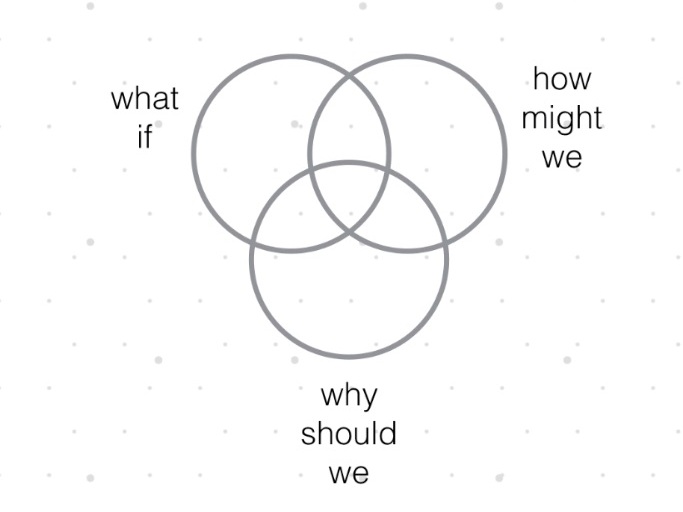Interaction19: Ubiety & Inclusive Design
IxDA Seattle was proud to host Interaction19, IxDA’s global conference, in February. IxDA members came from across the world to talk, listen, and learn design—and, as a bonus, witness Seattle trying to handle snow. The weather reinforced the conference theme, “Design in the Wild,” by reminding us of the unpredictable times we are living in and designing for.
A lot was covered by the eight keynote speakers, almost 90 talks, and dozen or so workshops. You can check out recordings of all the talks and panels in your own time. This post synthesizes a few prominent themes and shares some resources.
Spirit of the Conference
The spirit of Interaction19 coalesced around inclusive design, albeit from disparate vantages: reckonings on ethics and responsibility and emerging tensions between empathy, accessibility, and inclusion. The topics of AI and machine learning instantiated all these debates.
“The next big thing is not a thing, it’s a change in the ecosystem of social relationships.” - Bill Buxton
Bill Buxton’s opening keynote, Wild Design for Living in the Wild, laid the foundation for many of these conversations. His broader point was that interaction design is not about technology but about understanding interactional dynamics within a given context and designing for them. He presented a provocation, to shift the optic from ubiquity to ubiety. Rather than designing things that can be widely adopted, which inevitably excludes, we should focus on the situated contexts for which we are designing and then adapt our designs as users and contexts change. The challenge is how do we design interaction for people (who's abilities and circumstances vary) grounded in place (geographically informed by socio-economic, political, and cultural dynamics), particularly when people and ideas are mobile and externalities are increasingly volatile? For Buxton, this is what "wild design for living in the wild" encapsulates.
Problematizing Empathy
The logical leap from ubiety to empathy may seem apparent. After all, we as designers are supposed to understand the humans we’re designing for. Yet in their talks, Liz Jackson and Don Norman turned our holy grail—empathy—on its head, bringing nuance to ubiety. Their call was to mobilize those with situated knowledge and bring them into the design process.
In his talk, 21st Century Design, Don Norman asserted that empathy is a worthy but rarely attained endeavor. Seeing the world through someone else’s lens is difficult and we often face suspicion when we try. Enduring solutions rarely come from outsiders who may only see symptoms and often don't understand the system enough to solve for endemic issues. His call to co-design with communities can be seen as a technique of ubiety, tapping into the intelligence of people in their place. Furthermore, he puts stock in the co-design process producing a sense of communal ownership, which he envisions, will make the entire design endeavor more sustainable.
Liz Jackson critically deconstructing empathy
Liz Jackson’s talk, Empathy Reifies Disability Stigmas, was blunt in its call to action. Empathy reinforces ubiquitous design because it fails to question the status-quo and instead tries to make accommodations within it. She challenges us not to “design for people with disabilities,” but rather, "examine the systems that disable us.” Jackson's is a call for solidarity, encouraging designers to design with disability experts who have the deep knowledge of where the interactions in their environments are broken and in need of redesigned.
In this regard, Jackson problematized the notion of co-designing as it is commonly practiced, asserting that it falls into the trap of designing for people, when we should be designing with people. Joe Meersman abstracted this sentiment one level higher in his talk on how to design with AI rather than for AI.
Inclusive Design
“The things we create embody the assumptions we have.”
- Bryce Johnson and John Porter
In their talk, Recognize Exclusion, Design for Inclusion, Bryce Johnson and John Porter also emphasized the need for a conceptual shift away from pathologizing disability to understanding disability as an experiential mismatch with one’s environment. Benjamin Parry left Johnson and Porter's talk posing the following questions, "How can our testing hypotheses be extended to prevent the creation of disability? Who are the best people to include in our research that will help us prove or disprove these hypotheses?” We should all be addressing these queries and Liz Jackson has the perfect resource to do so, a consultant list of disability experts.
Anna Arriola and Jason Brush broadened the scope of inclusive design by encouraging collaboration with specialists from different fields and disciplines in order to have more salient impact. Pooling knowledge from diverse data sets is essential to AI and machine learning success. But we need to start earlier. They argue we need to begin designing technologies collaboratively with data scientists, law practitioners, regulators, social scientists, community advocates, and others in order to avoid inadvertently marginalizing populations.
What’s at stake
A bell curve Uglow presented showing what’s left out when we design for ubiquity.
Tea Uglow’s talk, Normality is Stupid: Connecting the Dots Between Inclusion & Diversity and Selective Bias in Machine Learning, stood out specifically in underscoring the stakes of ubiquitous design by showing what it leaves out, what it excludes, and the harm caused.
Uglow's talk reminded us of technology’s alienating effects. Technology may take on a so-called life of its own. We can’t account for the effects of every contingency, unintended consequence, or negative externality. But we mustn’t forget technology, in all forms, is a product of our making. People write algorithms. People design software. Our values, social constructs, and biases are echoed in what we create, including our data sets.
Alok Nandi challenged us to take a Venn diagram approach to the overlapping modalities and fields of thoughts that we must account for when designing.
There were panels and keynotes solely focused on ethics and AI and responsibility as well as talks that addressed these topics in relation to living, dying, future(s), and others. In fact, ethics imbued much of the conversation whether it was the focal topic or not. In this regard, the conference was a collective reckoning that we are responsible when the interactions we design end up replicating exclusion and marginalization or undermining social progress.
In sum, Interaction19 was an exercise in communal intentionality. We talked, we listened, and we debated on how we move forward with people and communities in their places to design together.
Milan will be hosting Interaction 20! The theme is “A new dawn.” Get your Early bird tickets now.
Related Resources:
Professional consultants: The Disabled List
Tool Kits:
Small Surfaces’ Ethical heuristics toolkit
8 Principles of Calm Tech
Video:
Find recordings of all the talks and panels on IxDA’s Vimeo channel
Podcast:
Listen to UX Cake’s interviews with all the keynote speakers





